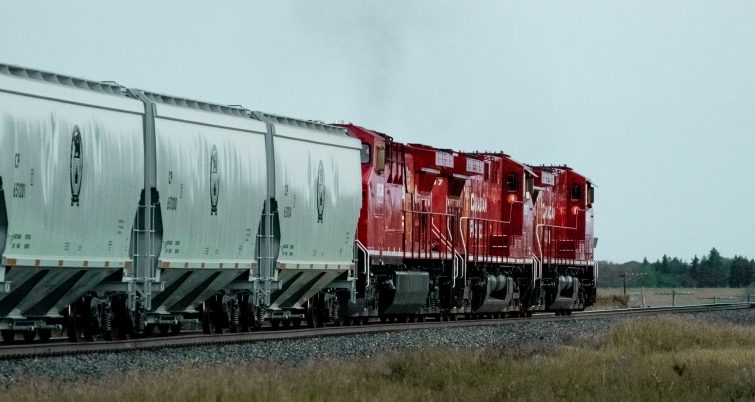Canadian oil train derailments – broken rail may have been the culprit
Written by David C. Lester, Editor-in-Chief
Canadian Pacific has suffered two oil train derailments within the past several months. The first was in December 2019, and the second was in February 2020. The Canadian Transportation Safety Board (TSB) has been investigating these derailments, and is suspicious that the cause may have been broken rail, according to a report in FreightWaves.
Transport Canada regulations around track standards were last updated in 2012, and the TSB is recommending that these regulations be updated since the industry runs heavier and longer trains now than it did in 2012.
In a March 4 letter from the TSB to Transport Canada, Dan Holbrook, acting director of rail/pipeline investigators, said “As train operations have evolved, the TSR (track safety rules) have not kept pace . . .While the TSR establish minimum standards for track infrastructure, there are no provisions in the TSR to address the need for enhanced track standards for key routes despite sometimes significant increases in DG (dangerous goods) traffic volumes.”
The letter went on to say “Over the past 10 years or so, train operations have evolved and there have been a number of operational improvements implemented throughout the rail industry, such as the proliferation of distributed power technology. These advancements have facilitated more effective management of in-train forces allowing for longer, heavier trains. Similarly, train traffic has evolved and generally increased as more DG are transported in either large blocks of cars within a merchandise train or as unit trains that transport a single DG product such as petroleum crude oil.”
The TSB also said that track failures have caused seven derailments of DG trains over the past several years. For example, Canadian National suffered two derailments of oil trains in 2015 due mainly to track issues, and as a result, the railroad significantly upgraded the track in the areas of the derailments, and modified it’s policies and procedures around track maintenance and inspection. These improvements were made on the Ruel Subdivision of CN, which has not suffered any major mainline derailments since 2015. FreightWays reports that no one in either the private or public sectors appreciated the extent to which heavier and longer trains were stressing the tracks.





